Spotting a yellow bird, no matter what kind, is always exciting! Yellow birds are some of the brightest visitors you might spot while birdwatching. Identifying these yellow-feathered friends can make your outdoor adventures more rewarding and help you connect with nature in a new way.
You can find these golden beauties across different habitats, from forests to gardens to wetlands. You might be surprised by how many different yellow bird species live near you. Some might be year-round residents, while others only visit during certain seasons.
American Goldfinch
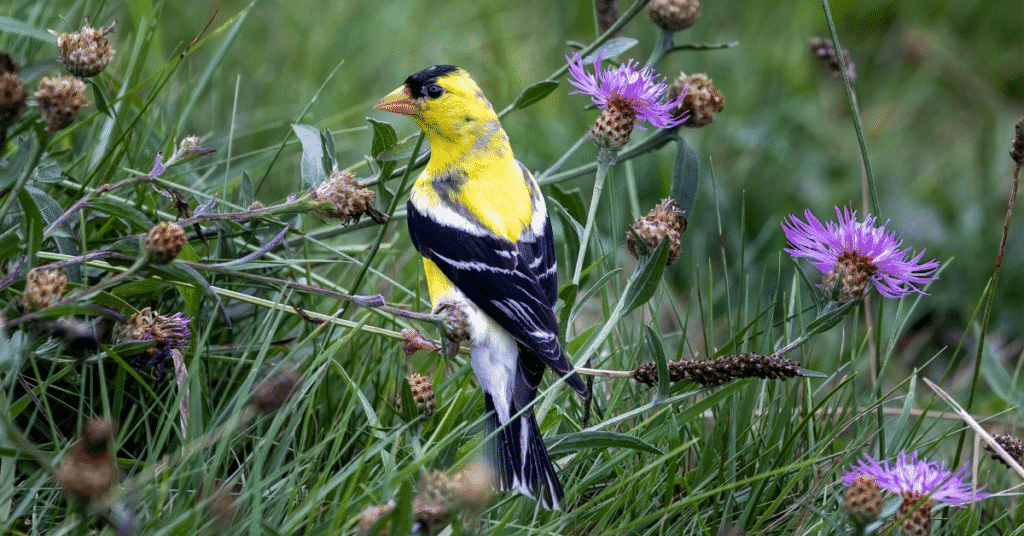
The American Goldfinch is a bright yellow bird that will catch your eye in any backyard. During summer, males display brilliant yellow feathers with black wings and a black cap on their heads.
Females and winter males are more olive-colored but still have distinctive black wings with white bars. You can easily identify them by their bouncy flight pattern that resembles a roller coaster.
These cheerful birds love to eat seeds, especially from thistle and sunflower plants. You might spot them hanging upside down on flower stalks as they feed.
Unlike many birds, Goldfinches wait until mid-to-late summer to nest. They time their breeding season to coincide with peak seed availability.
A family in Ohio once reported a goldfinch that visited their garden daily for five years. They recognized it by a unique white spot on its wing and named it “Sunny.”
Goldfinches are very social and often travel in flocks. You’ll likely hear their sweet “po-ta-to-chip” call before you see them.
These birds are one of the strictest vegetarians in the bird world. They eat an almost exclusively seed-based diet, unlike most birds that feed insects to their young.
Yellow Warbler

The Yellow Warbler is one of the brightest yellow birds you’ll spot in North America. Its sunshine-yellow feathers make it stand out among the green leaves where it likes to hide.
Males have reddish streaks on their chests, while females are a bit paler. You can find these small songbirds in wet, brushy areas near streams or ponds during spring and summer.
Their sweet, melodic song sounds like “sweet-sweet-sweet-a-little-more-sweet.” Once you learn it, you’ll notice these birds everywhere during breeding season.
Yellow Warblers are amazing builders. They create cup-shaped nests in just a few days using plant fibers, grass, and spider silk to hold everything together.
If a cowbird lays an egg in its nest, Yellow Warblers sometimes build a new nest right on top of the old one! One researcher found a stack of six nests built this way as the determined Warbler refused to raise the cowbird’s chick.
These birds eat mainly insects, especially caterpillars. You might spot them hopping along branches, searching leaves for their next meal before migrating to Central America for winter.
Common Yellowthroat
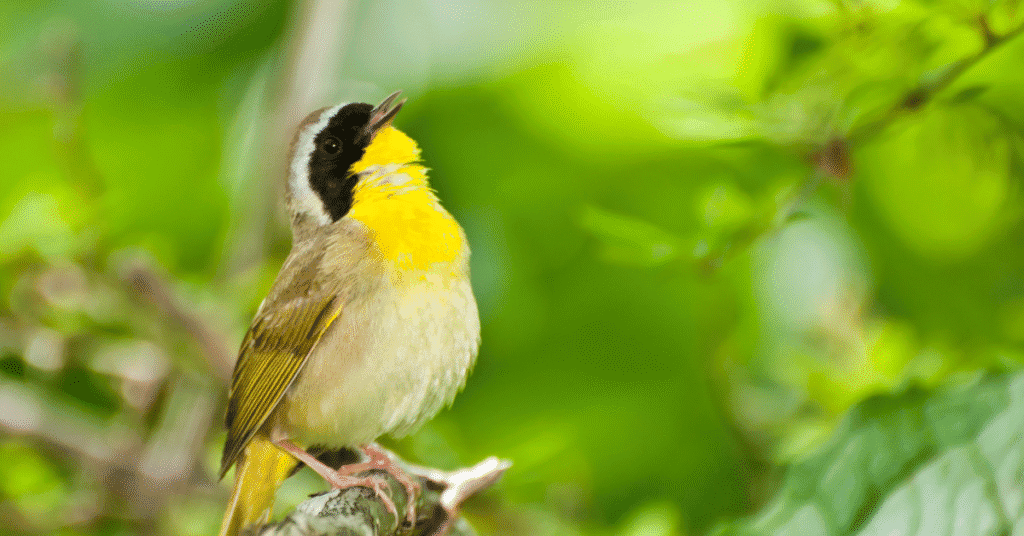
The Common Yellowthroat is a small, energetic bird with a bright yellow throat and chest. Males have a distinctive black mask that stretches across their eyes like a bandit, making them easy to spot among foliage.
You can find these cheerful birds in wet, brushy areas like marshes and the edges of streams. They prefer to stay low in dense vegetation, often hiding in cattails or shrubs.
Listen for their distinctive “wichity-wichity-wichity” call when you’re near wetlands. This song is a sure sign that a Common Yellowthroat is nearby, even if you can’t see it yet.
These birds are excellent insect hunters. You might spot them darting from plant to plant, catching flies, spiders, and caterpillars with impressive speed.
A birdwatcher in Minnesota once reported a Common Yellowthroat that built its nest in her garden. The bird became so comfortable with her presence that it would sing from a branch just feet away while she worked.
You can sometimes see these birds far from their usual habitats during migration. They might visit your backyard briefly if you have dense shrubs and plenty of insects.
Oriole

Orioles are known for their bright yellow and black coloring. You can find them in many parts of North America during the warmer months.
These birds love to eat fruits and nectar. You might spot them visiting your backyard if you put out orange halves or grape jelly.
Orioles build unique hanging nests that look like small pouches. They weave plant fibers, grasses, and string together to create these amazing homes for their babies.
The Baltimore Oriole is one of the most common types you’ll see. Males have bright orange-yellow bodies with black heads and wings.
A fun fact about orioles is that they can drink nectar like hummingbirds! You might see them visiting your flower garden to sip from tubular blooms.
One birdwatcher in Maryland shared a story about an oriole that returned to the same tree in her yard for five straight summers. She recognized it by a small mark on its wing.
Orioles are excellent singers, too. You can often hear their whistling songs before seeing them in the treetops.
Saffron Finch
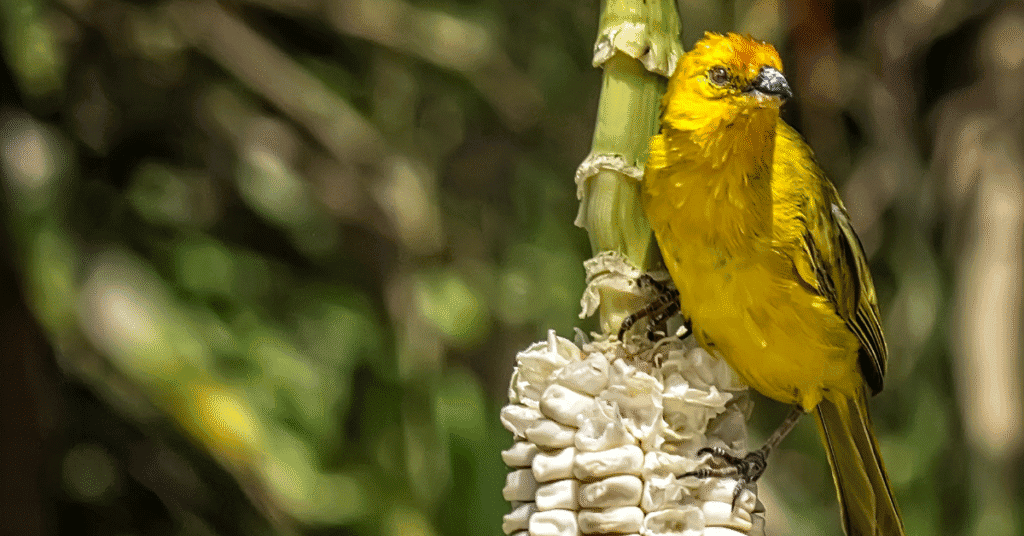
The Saffron Finch is a bright yellow bird that brings a splash of sunshine to your backyard. With its vibrant plumage and cheerful song, this small bird is a delight to spot in the wild.
Native to South America, these birds have adapted well to urban environments. You might find them hopping around parks or gardens, looking for seeds and insects to eat.
Male Saffron Finches are bright yellow with an orange crown, while females are more yellowish-green. Their bright color helps them attract mates during breeding season.
These social birds often gather in small flocks. You’ll likely hear their melodic chirping before you see them fluttering among trees or shrubs.
One birdwatcher in Brazil tells of a Saffron Finch that visited her garden daily for three years. The bird would tap on her window each morning as if asking for breakfast, creating a special bond between human and bird.
Saffron Finches build cup-shaped nests in trees or shrubs. You might spot them carrying nesting materials like grass and twigs during spring.
Their cheerful presence makes them popular among bird enthusiasts. Try setting up feeders with small seeds to attract them to your yard.
Yellow-headed Blackbird
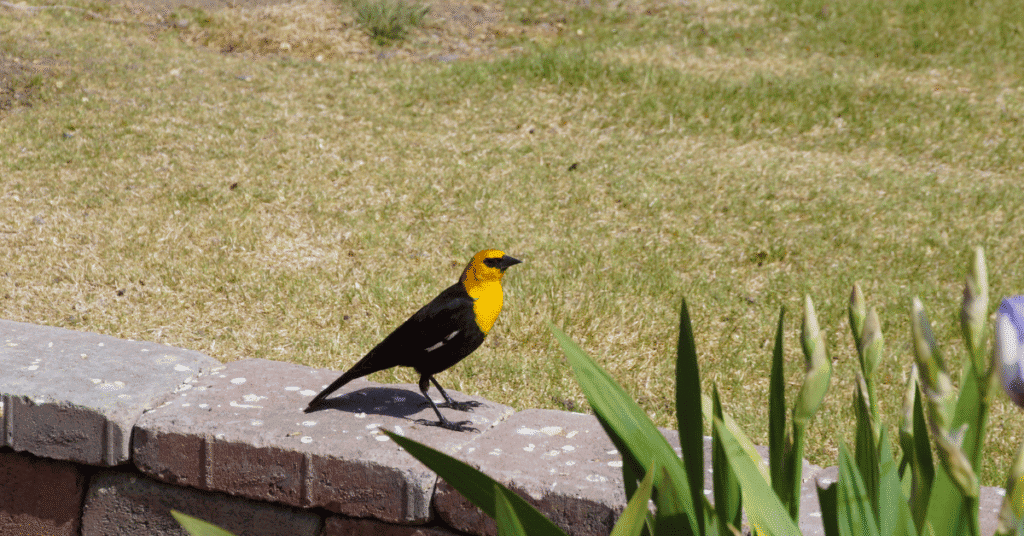
The Yellow-headed Blackbird is a striking bird that’s impossible to miss. Its bright yellow head and chest contrast sharply with its glossy black body, making it stand out in wetlands across North America.
You’ll typically find these birds in marshes and wetlands, building their nests among cattails. Males are particularly showy, with their golden yellow heads and white patches on their wings.
The Yellow-headed Blackbird has one of the most unique songs among North American birds. You might be surprised by their harsh, buzzy calls that sound like a rusty gate opening or someone scraping metal.
During the breeding season, male Yellow-headed Blackbirds defend their territories fiercely. You can watch them perching on tall reeds, showing off their yellow heads to attract females and warn away rivals.
These birds eat mainly insects during summer, helping control pest populations. In winter, they switch to seeds and grains when they join large flocks with other blackbird species.
Next time you’re near a marsh, look for these yellow-capped birds. Their distinctive coloring and odd vocalizations make them a favorite for beginner birdwatchers.
Yellow-bellied Sapsucker
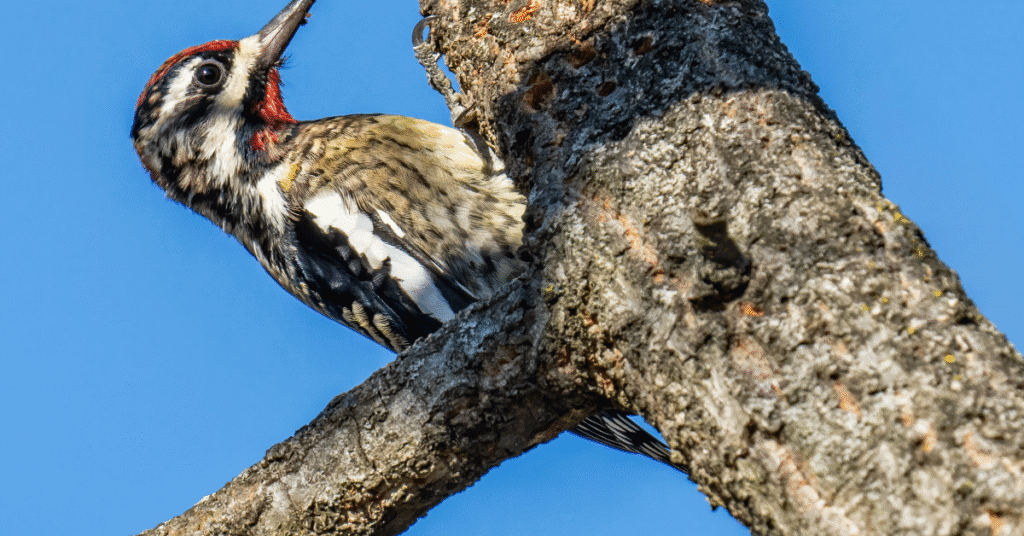
The Yellow-bellied Sapsucker is a woodpecker with a subtle yellow belly that makes it stand out in forests. While the standout noticeable features are the red forehead and black and white patterned body, the slightly yellow body is still a distinguishing characteristic.
These birds get their name from their feeding habit of drilling neat rows of holes in tree bark. You might spot the perfectly aligned holes before you see the bird itself!
Yellow-bellied Sapsuckers feed on tree sap and the insects attracted to it. When you hear a distinctive mewing call in the woods, look up—it might be this unique woodpecker.
During spring, you can often find these birds in deciduous forests across eastern North America. In winter, they migrate south to warmer regions.
A birder in Vermont once spent three weeks tracking a single Sapsucker family. She discovered that their sap wells were visited by hummingbirds, butterflies, and other wildlife who also enjoyed the sweet sap.
These birds create a new set of sap wells each year, helping you track where they’ve been active. You might spot this yellow-bellied beauty on your next forest walk with patience and a good eye.
Wilson’s Warbler
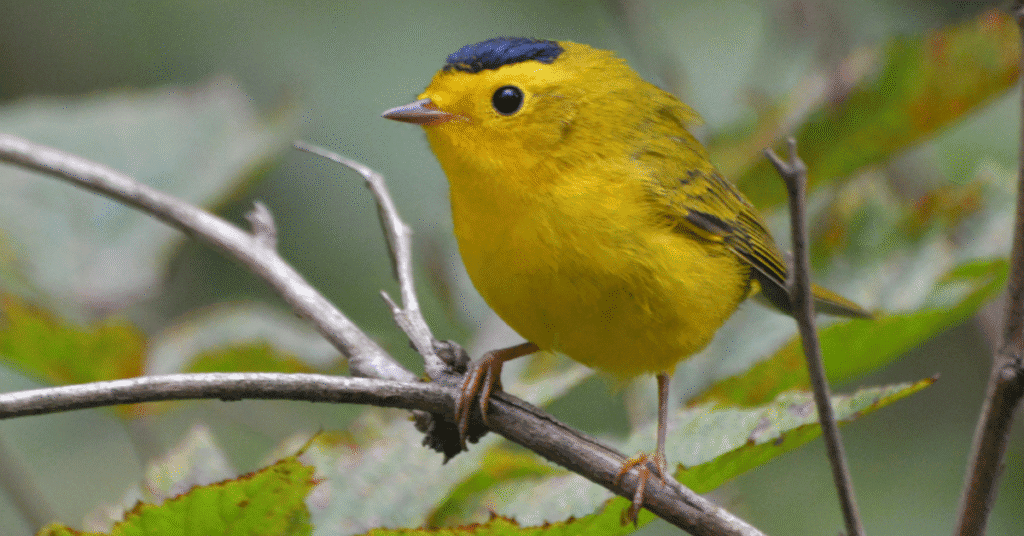
Wilson’s Warbler is a delightful little yellow bird with a distinctive black cap on its head. Males have a more prominent cap, while females have a lighter or absent cap. These birds are small, measuring only about 4.5 inches in length.
You can spot Wilson’s Warblers in shrubby areas near streams and in open woods. They’re most common during spring and fall migrations in many parts of North America.
These active birds are always on the move, flitting from branch to branch in search of insects. You might see them performing quick, darting flights to catch bugs in mid-air.
Wilson’s Warblers have a cheerful, chattering song that sounds like “chi-chi-chi-chi-chi-chit.” Once you learn it, you can locate these birds even when hidden in dense foliage.
A birdwatcher in Oregon once reported seeing a Wilson’s Warbler defending its territory against a bird three times its size. Despite being tiny, these warblers can be surprisingly bold when protecting their turf!
When looking for Wilson’s Warblers, focus your binoculars on low vegetation. These birds prefer to stay close to the ground, making them easier to spot than species hanging in tall treetops.
Citrine Wagtail
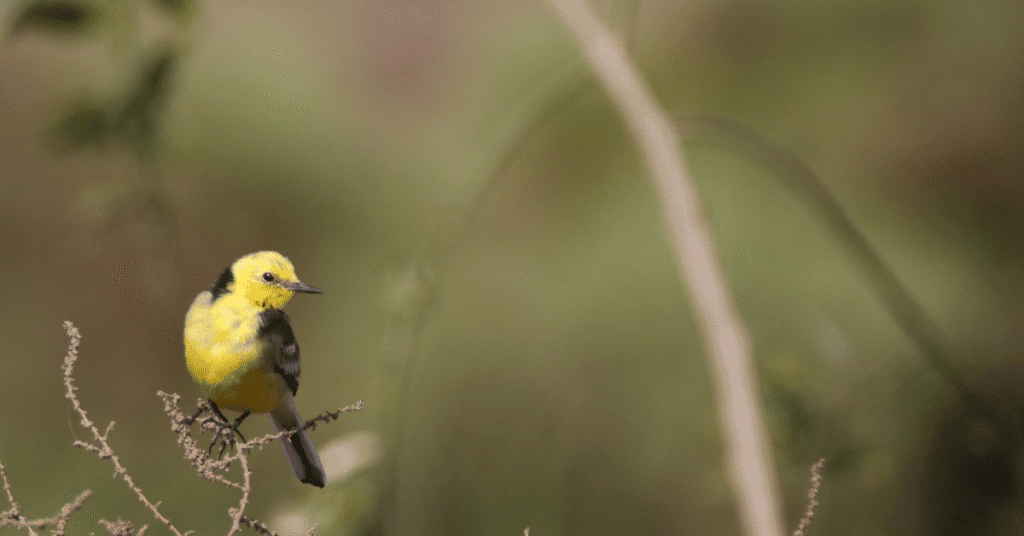
The Citrine Wagtail is a small yellow bird with a bright lemon-yellow head and chest. You can spot this cheerful bird hopping along the ground, constantly wagging its tail up and down.
These birds love wet areas like marshes and damp meadows. You might see them searching for insects near the edges of ponds or streams.
Citrine wagtail is rare in North America but is more common across Europe and Asia. When you do spot one, consider yourself lucky!
Male Citrine Wagtails are brighter yellow than females, with more subtle coloring. You can tell them apart by looking at the intensity of the yellow on their heads.
A birdwatcher in Minnesota once spotted a Citrine Wagtail that had strayed thousands of miles from its normal range. The sighting caused hundreds of bird enthusiasts to flock to the area to see this rare visitor.
These birds build their nests on the ground, hidden among tall grasses. You might notice them carrying nesting materials if you’re patient and observant.
Prothonotary Warbler
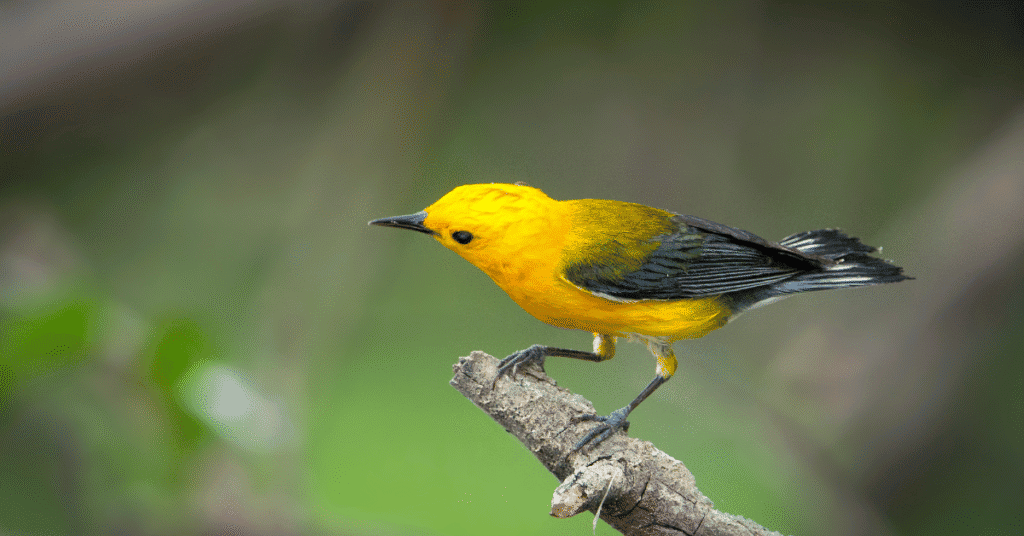
The Prothonotary Warbler is a bright yellow songbird with blue-gray wings. You can easily spot this beauty in swampy forests and along rivers in the eastern United States during spring and summer.
These birds get their unusual name from Catholic church officials called “prothonotaries” who wore bright yellow robes. When you hear their loud, ringing “sweet-sweet-sweet” call, look up to spot their golden feathers glowing among the trees.
Prothonotary Warblers are one of the few warblers that nest in tree cavities instead of building cup nests. You might find them using old woodpecker holes or nesting boxes near water.
During a birding trip in Louisiana, a photographer waited three hours in knee-deep swamp water to capture the perfect shot of a male Prothonotary feeding its mate. His patience paid off with an award-winning photo!
These yellow birds face challenges due to wetland loss. You can help them by supporting wetland conservation or even installing nest boxes in suitable habitats near you.
Tips for Identifying Yellow Birds
Spotting yellow birds can be exciting but sometimes challenging. Learning about key field marks and having the right tools will make identification much easier and more accurate.
Field Marks and Plumage Variations
When identifying yellow birds, look first at the shade of yellow. Is it bright lemon yellow like a Goldfinch, or more muted like an Evening Grosbeak? Pay attention to where the yellow appears – full body, just the breast, or perhaps only highlights on wings.
Notice pattern variations too. Some yellow birds have dark wings (like the American Goldfinch), streaked breasts (like female Yellow Warblers), or distinctive facial markings (like the Yellow-throated Vireo).
Don’t forget to check for seasonal changes. Many male yellow birds are brighter during the breeding season but duller in winter. Female birds often show more subdued yellow tones year-round.
Size comparison helps, too. Is the bird tiny like a warbler or larger like a Western Tanager? Compare to common birds you know – sparrow-sized, robin-sized, etc.
Birdwatching Tools and Resources
check out some amazon affiliate resources below. We earn a tiny commission.
A good pair of binoculars is essential – 8×42 magnification works well for most birders. They help you see details without getting too close and scaring birds away.
Field guides specific to your region will narrow down possibilities. Apps like Merlin Bird ID or eBird can help with instant identification using photos or sound recordings.
Try recording bird calls on your phone. Many yellow birds have distinctive songs that can be easier to identify than visual markings alone.
Join local birdwatching groups for field trips. Experienced birders can teach you tricks for spotting subtle differences between similar yellow species.
A pocket notebook (for field notes) helps track details you might forget. Note the date, location, and specific markings while they’re fresh in your mind.